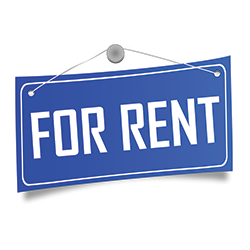|
exhibiting 101
 The Sky's the Limit
Rigging raises the stakes of your exhibiting program. Keep your overhead elements from crashing down with these expert insights.
It's hard to overstate the visual impact of overhead elements. Whether they're simple fabric banners or elaborate constructions complete with dazzling multimedia displays, these suspended – aka rigged – structures give exhibits maximum visibility, lend a sense of permanence, and can lure attendees from across the exhibition hall. But with these benefits come additional planning and numerous logistical complications.
So why is rigging such a problematic matter? If you ask show managers, it's because of the safety of exhibitors and attendees who have large objects suspended above their heads. If you ask the venue owners, their concern is for the structural integrity of their facilities. As exhibit managers, it's up to us to know how to order rigging as cost-effectively and efficiently as possible. To help you reach your lofty exhibiting aims, here are my top tips and things you need to know about rigging. ➤ Rigging is an exclusive service.Rigging is generally managed or subcontracted by the general services contractor (GSC). This means you can't hire anyone to hang your overhead elements but the designated rigging-services provider named in the exhibitor services manual. However, the rules governing who is allowed to assemble and dismantle these elements can vary depending on the show city and union jurisdiction. In the majority of venues where I've had rigged signs, the rules required that they be assembled by only the GSC's installation-and-dismantle (I&D) labor for liability reasons. In a handful of other venues, I've been allowed to have my exhibitor-appointed contractor (EAC) labor assemble overhead elements for hanging by the GSC's aerial riggers. And generally, elements that must be assembled by the GSC's labor can be dismantled by your EAC labor during teardown since there is much less liability. Check with the GSC and your EAC – if you're using one – to find the most economical way to manage the labor for your hanging sign or truss. ➤ Elements to be rigged often must be sent to the advance warehouse.Riggers generally start hanging elements as soon as the show floor is marked with tape showing the booth locations and numbers. Their goal is to get as many pieces of exhibitry flown (i.e., rigged) before exhibitors' freight fills the show floor. In order for rigging to be scheduled and the overhead elements to be available for assembly by the GSC's or EAC's I&D labor, most GSCs mandate that these elements be shipped to the show's advance warehouse and the freight be marked with the "Hanging Sign" label provided in the exhibitor services manual. This freight is often moved from the advance warehouse to the exhibit hall to be ready for assembly before the rest of the advance and direct-to-site freight arrives on the show floor. ➤ GSCs require rigging details – and lots of them – in advance.There are a number of forms to complete in the exhibitor services manual that provide riggers with the information they need to know about your service order. This information includes the type of overhead element (e.g., a sign, banner, or truss); its shape, weight, and fabrication (e.g., wood, Sintra, or fabric); the number of hanging points; the location of the element when suspended over your booth space; its height as measured from the top of the element to the floor; its correct orientation (i.e., if a specific side needs to face the front of the hall); and any electrical requirements. Additionally, many shows require exhibitors to submit actual construction drawings for review and approval by a specific date. These drawings generally must include a rigging plot with load factors, equipment counts, and equipment positions indicating cable picks. The element's builder may be required to sign a structural integrity statement certifying that the aerial exhibitry is engineered to be safe to hang and releases the show organizer, show manager, GSC, venue, and riggers from any liability. Depending on the venue, shows may also mandate that a structural engineer licensed in the city or state where the element will be hung signs off on the drawings as well. Exhibitors may also be warned that they could be charged fees for any additional testing or approvals required prior to the rigging of the element. Finally, the GSC will ask you to estimate the number of hours of I&D labor required for assembly and disassembly, as well as when you want the element hung during setup and dropped during dismantle. You may also be asked if you want to supervise the rigging (and if so, when) or want the GSC to provide its own supervisor for an additional fee. ➤ Pad your budget for extra rigging labor and materials. My rule of thumb for estimating the labor to assemble a hanging element is to take my best "guestimate" and double it. After all, if you are hanging heavy signs and trusses, or if your element requires electrical power, you may need last-minute services and incur additional costs. Also, having multiple labor unions present during installation can cause delays due to increased coordination. When in doubt, ask for a quote from the riggers. Finally, don't forget to take into consideration that your element may be hung on overtime hours, sending your labor costs soaring.The fee for renting lifting equipment (e.g., a boom lift, scissor lift, or cherry picker) is generally bundled with the cost of the rigging crew, but the cost of assembling your element is calculated separately, as assembly labor and riggers are members of different unions and compensated at different rates. There is a one-hour minimum for rigging services at most venues, but some cities have longer labor minimums for an assembly crew, so make sure to read the fine print on the rigging labor-order forms. To maximize savings, always get your order and payment submitted by the early bird deadline. In addition to contracting with the GSC for equipment rentals and rigging staff, exhibitors will also be billed for rigging materials, including purchasing metal cables that are cut to the proper length for suspending the overhead elements and filament tethers to keep them from spinning. Other hanging supplies, such as electric chain hoists (aka chain motors) for lifting heavy signs and trusses, are rented through the GSC and will end up on your on-site bill. ➤ If Murphy's Law can strike, it will.Problems I've encountered with rigging include my hanging signs twice being hung incorrectly in my absence when I'd stipulated not to proceed on both assembly and hanging if I wasn't on the show floor. I've had complex hanging signs that weren't shipped from the manufacturer with setup instructions, which doubled my assembly labor bill. Fabric tariffs once caused problems getting my overhead sign through U.S. customs after a show in Canada. And at one show, my booth space was under a ceiling support that prevented anything from being suspended over the exhibit, leaving me without my primary corporate-identification signage. Finally, I've been so tired at the end of a teardown that I didn't notice that my hanging sign was still suspended. These snafus prove that carefully made plans can be sidelined by many factors. But understanding your part in providing all the necessary information to rigging crews can alleviate the majority of potential problems hanging over your head. E  Candy Adams
Candy AdamsCTSM, CEM, CMP, CMM "The Booth Mom," is an independent exhibit project manager, trainer, speaker, consultant, and an Exhibitor Conference faculty member. CandyAdams@BoothMom.com
|
|
|
||||||||||||||||||||||||||||
|
|
||||||||||||||||||||||||||||
|
TOPICS Measurement & Budgeting Planning & Execution Marketing & Promotion Events & Venues Personal & Career Exhibits & Experiences International Exhibiting Resources for Rookies Research & Resources |
MAGAZINE Subscribe Today! Renew Subscription Update Address Digital Downloads Newsletters Advertise |
FIND IT Exhibit & Display Producers Products & Services All Companies Get Listed |
EXHIBITORLIVE Sessions Certification Exhibit Hall Exhibit at the Show Registration |
ETRAK Sessions Certification F.A.Q. Registration |
EDUCATION WEEK Overview Sessions Hotel Registration |
CERTIFICATION The Program Steps to Certification Faculty and Staff Enroll in CTSM Submit Quiz Answers My CTSM |
AWARDS Sizzle Awards Exhibit Design Awards Portable/Modular Awards Corporate Event Awards Centers of Excellence |
NEWS Associations/Press Awards Company News International New Products People Shows & Events Venues & Destinations EXHIBITOR News |
||||||||||||||||||||
|
||||||||||||||||||||||||||||






